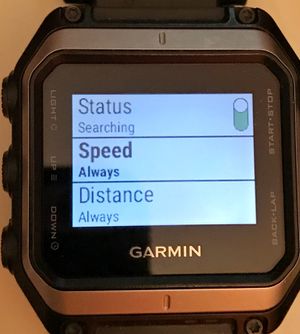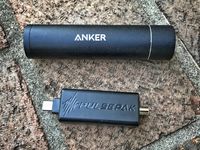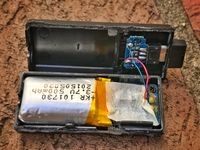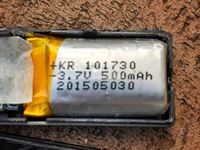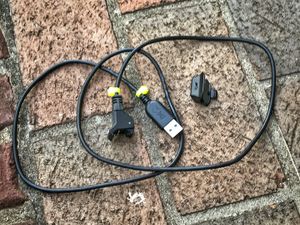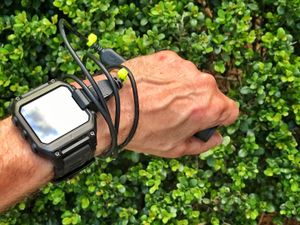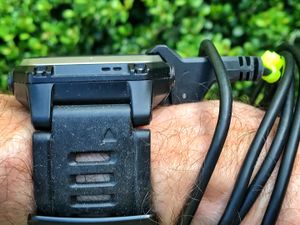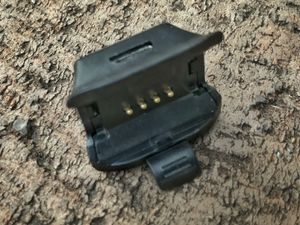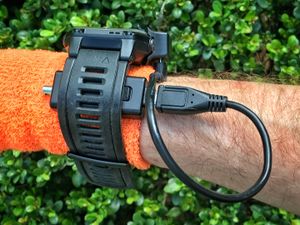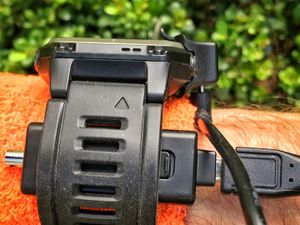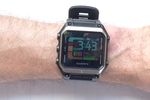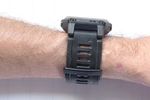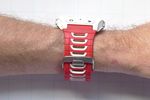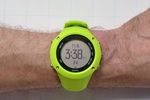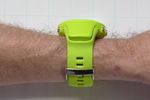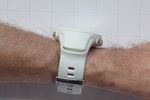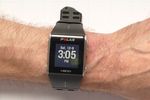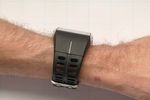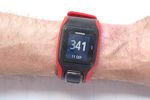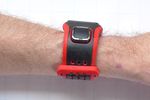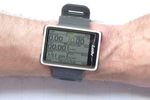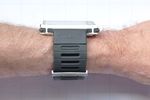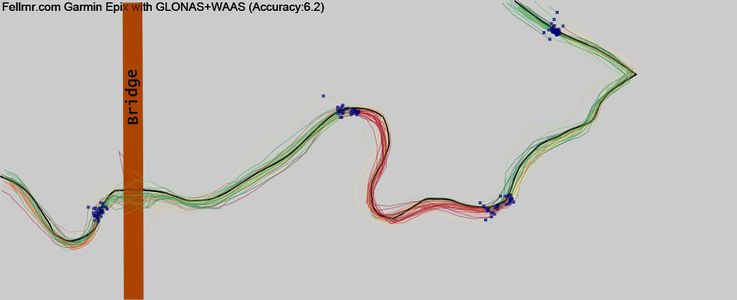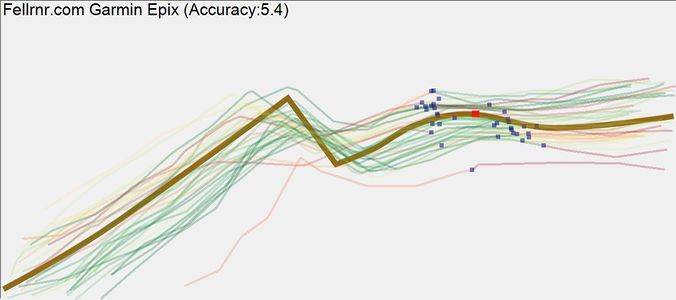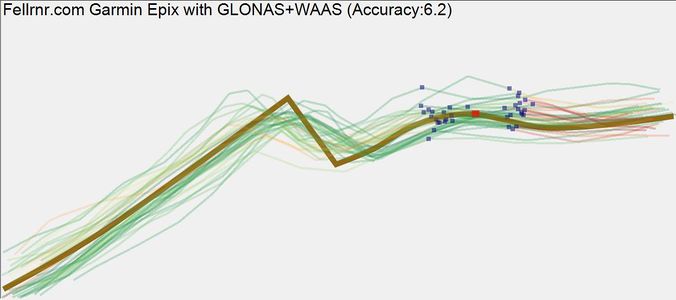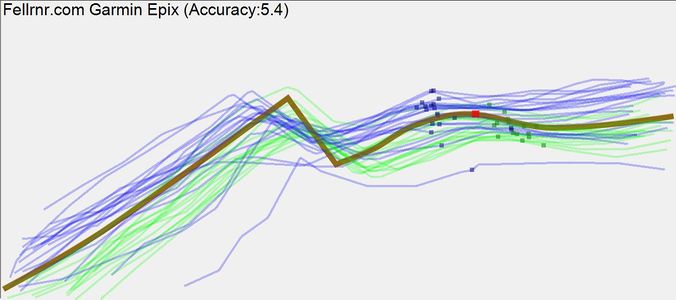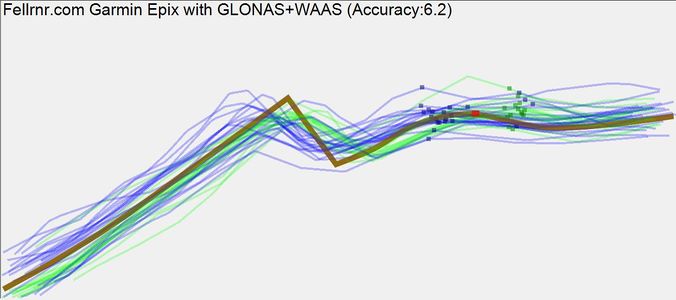Difference between revisions of "Garmin Epix"
User:Fellrnr (User talk:Fellrnr | contribs) |
User:Fellrnr (User talk:Fellrnr | contribs) |
||
| (7 intermediate revisions by the same user not shown) | |||
| Line 1: | Line 1: | ||
{{DISPLAYTITLE:Garmin Epix Review}} | {{DISPLAYTITLE:Garmin Epix Review}} | ||
[[File:GarminEpix.jpg|thumb|right|200px|The {{Garmin Epix}}, showing a topo map.]] | [[File:GarminEpix.jpg|thumb|right|200px|The {{Garmin Epix}}, showing a topo map.]] | ||
| − | The Garmin Epix | + | The Garmin Epix was released as the [[Best Running Watch| top of Garmin's GPS watch line]], though it's been superseded by the [[Garmin Fenix 5X]]. The Epix has nearly all of the functionality of the Fenix 5X, but now costs far less. It's full color map display is great for both urban and wilderness runners when they're in unfamiliar surroundings. The Epix includes [[Connect IQ]] that allows it run applications, much like a smartphone, but Garmin's support of Epix is rather poor and the Epix doesn't have the latest version of Connect IQ. This means you can't use the [[Stryd]] app, or a number of others that require the latest version. You can still get the extremely accurate pace & distance of Stryd while recording a GPS track, but you can't get running power so easily. The Epix has a clear display, real buttons, touchscreen, map display and rich functionality, which makes it one of the best watches if you combine it with a [[Stryd]] footpod, and you can afford it. The big concern I have is that Garmin seems to be forgetting about the Epix, with fewer firmware updates than other devices, though they did issue one in Feb 2017. On the other hand, the price of the Epix has dropped dramatically, making it a rather more attractive option. For a simple evaluation of a GPS watch, I look at how well it can answer some basic questions: |
| − | * '''How far did I run?''' This is the most basic question, and sadly, the Epix has rather poor [[GPS Accuracy]], and while firmware updates might improve this slightly, I doubt it will get close to the accuracy of the [[Polar V800]]. It looks like activating | + | * '''How far did I run?''' This is the most basic question, and sadly, the Epix has rather poor [[GPS Accuracy]], and while firmware updates might improve this slightly, I doubt it will get close to the accuracy of the [[Polar V800]]. It looks like activating WAAS might improve accuracy, it's still not great. The good news is that the Epix has good support for the [[Stryd]] footpod which allows you to get extremely accurate pace and distance while retaining all GPS navigation features. |
| − | * '''How fast am I running?''' Knowing how fast you're running can be a nice to know, or it can be vital for your training or race performance. Because of the nature of GPS, watches that rely on GPS signal alone tend to have serious problems with current pace. Thankfully, the Epix | + | * '''How fast am I running?''' Knowing how fast you're running can be a nice to know, or it can be vital for your training or race performance. Because of the nature of GPS, watches that rely on GPS signal alone tend to have serious problems with current pace. Thankfully, the Epix will support the [[Stryd]] footpod. |
* '''Where am I? '''The Epix is as good as it gets for navigation. It includes: | * '''Where am I? '''The Epix is as good as it gets for navigation. It includes: | ||
** '''Color Maps'''. You'll see full color maps, rather like a smart phone, with roads and paths marked out. | ** '''Color Maps'''. You'll see full color maps, rather like a smart phone, with roads and paths marked out. | ||
| Line 12: | Line 12: | ||
** '''Compass'''. A magnetic compass can help you orient yourself or the map. Without a magnetic compass you have to be moving for the GPS to give you a sense of direction. | ** '''Compass'''. A magnetic compass can help you orient yourself or the map. Without a magnetic compass you have to be moving for the GPS to give you a sense of direction. | ||
* '''What's my cadence? '''[[Cadence]]''' '''is one of the most critical and often overlooked aspects of running. If you get your Cadence right, many other things naturally fall into place. Not only does the Epix get [[Cadence]] from a [[Footpod]], it will also get it from the Garmin Run Heart Rate monitor. There is also support for Cadence from the internal accelerometer, though I find that's not as accurate. The Cadence alerts are especially useful for keeping you on track. | * '''What's my cadence? '''[[Cadence]]''' '''is one of the most critical and often overlooked aspects of running. If you get your Cadence right, many other things naturally fall into place. Not only does the Epix get [[Cadence]] from a [[Footpod]], it will also get it from the Garmin Run Heart Rate monitor. There is also support for Cadence from the internal accelerometer, though I find that's not as accurate. The Cadence alerts are especially useful for keeping you on track. | ||
| − | For ultramarathon running the battery life of the Epix makes it a strong candidate, especially with the mapping functionality. If you hope to be still moving during the [[Second Dawn]], | + | For ultramarathon running the battery life of the Epix makes it a strong candidate, especially with the mapping functionality. If you hope to be still moving during the [[Second Dawn]], you can [[Charge On The Run| charge it while running]] as detailed below. |
| + | {{BuyAmazon|AZID=B00S776RW8|AZN=Garmin Epix}} | ||
=GPS Accuracy= | =GPS Accuracy= | ||
The [[GPS Accuracy]] for the Epix is poor at best; while it's not the worst I've seen, it's close to the bottom of the pile. Determining if it's acceptable for your running will depend on your usage. | The [[GPS Accuracy]] for the Epix is poor at best; while it's not the worst I've seen, it's close to the bottom of the pile. Determining if it's acceptable for your running will depend on your usage. | ||
| − | * The Epix can give a reasonable estimate of how far you've run but the errors can add up. The amount of error depends on your route; in straight lines the Epix is okay, though even then it's worse than most other devices. However, on a twisty course it is out by around 0.75 mile on a 20 mile run. That's enough to mess up your marathon training | + | * The Epix can give a reasonable estimate of how far you've run but the errors can add up. The amount of error depends on your route; in straight lines the Epix is okay, though even then it's worse than most other devices. However, on a twisty course it is out by around 0.75 mile on a 20 mile run. That's enough to mess up your marathon training! I'd highly recommend you use the Epix with the [[Stryd]] footpod. |
| − | * GPS watches are not accurate enough to give you a useful display of your current pace. However, the Epix | + | * GPS watches are not accurate enough to give you a useful display of your current pace. However, the Epix has great support for the [[Stryd]] footpod, something I'd highly recommend. |
| − | |||
If you want better [[GPS Accuracy]] than the Epix, then the [[Polar V800]] is by far the best I've tested, though the [[Suunto Ambit3]] is close and a better all-round running watch. For more details on GPS accuracy, see the section "GPS Accuracy Analysis" below. | If you want better [[GPS Accuracy]] than the Epix, then the [[Polar V800]] is by far the best I've tested, though the [[Suunto Ambit3]] is close and a better all-round running watch. For more details on GPS accuracy, see the section "GPS Accuracy Analysis" below. | ||
=Garmin Epix Pros= | =Garmin Epix Pros= | ||
* The Epix will display full color maps, which can be freely and easily downloaded from the internet. | * The Epix will display full color maps, which can be freely and easily downloaded from the internet. | ||
| + | * The Epix has great support for the [[Stryd]] footpod. It will display pace and distance from the extremely accurate Stryd while retaining all GPS navigation features. For situations where pacing is critical, such as running a marathon, this is a must have feature. | ||
* The Epix supports Garmin's [[Connect IQ]], which allows for the creation of apps in much the same way you can run apps on Android or iOS. | * The Epix supports Garmin's [[Connect IQ]], which allows for the creation of apps in much the same way you can run apps on Android or iOS. | ||
| − | |||
* The Epix is larger than devices like the [[Garmin 620]], and it doesn't look like a traditional watch in the way the [[Garmin Fenix 2]] does. However, I have tiny wrists (less than 6 inches) and I found Epix is quite comfortable, with a strap that works better than most I've tested. The Epix fits my wrist far better than the [[Polar V800]] which I have to wear over a sweatband. | * The Epix is larger than devices like the [[Garmin 620]], and it doesn't look like a traditional watch in the way the [[Garmin Fenix 2]] does. However, I have tiny wrists (less than 6 inches) and I found Epix is quite comfortable, with a strap that works better than most I've tested. The Epix fits my wrist far better than the [[Polar V800]] which I have to wear over a sweatband. | ||
* The color display on the Epix has much richer colors than some of Garmin's earlier watches. In other sports watches I don't think that color adds much functionality, but it's vital for the Epix to be able to display maps. The font sizes are mostly easy to read, though occasionally I've struggled. The Epix has exactly the same size and resolution display as the [[Garmin 920XT]]. | * The color display on the Epix has much richer colors than some of Garmin's earlier watches. In other sports watches I don't think that color adds much functionality, but it's vital for the Epix to be able to display maps. The font sizes are mostly easy to read, though occasionally I've struggled. The Epix has exactly the same size and resolution display as the [[Garmin 920XT]]. | ||
| Line 43: | Line 43: | ||
* A minor win for the Epix is it's charging cable; it's the only device where I've found the cable clips into the watch easily and reliably. | * A minor win for the Epix is it's charging cable; it's the only device where I've found the cable clips into the watch easily and reliably. | ||
=Garmin Epix Cons= | =Garmin Epix Cons= | ||
| + | The Epix has no major flaws, and these cones are really more quibbles than anything else. | ||
| + | * The Epix is not unattractive in a rather plastic way, but it's nowhere near as elegant and stylish as the [[Polar V800]]. In a strange way, I think the looks of the epics have proved to be one of its bigger problems. While I think it's better looking than the [[Garmin 920XT]], I think it's trying to look more stylish and less functional, which gives it an air of "tried but failed" in the stylistic department. Garmin might have done better to package it so that it looks like it's intended to be plastic, rather than aiming to mimic the looks of the Fenix range. | ||
* The Epix includes an internal accelerometer to give you an idea of pace and distance while running on a treadmill without a footpod, but I found the accuracy was rather poor. I have yet to come across a watch that can reasonably estimate your pace from the movement of your wrist, nor does it seem likely that this functionality is practical. | * The Epix includes an internal accelerometer to give you an idea of pace and distance while running on a treadmill without a footpod, but I found the accuracy was rather poor. I have yet to come across a watch that can reasonably estimate your pace from the movement of your wrist, nor does it seem likely that this functionality is practical. | ||
* You need to have the new HRM for the some of the features. The Epix will display Heart Rate and calculate [[Firstbeat| Training Effect]] with the older Garmin HRM, but not Ground Contact Time or Vertical Oscillation. | * You need to have the new HRM for the some of the features. The Epix will display Heart Rate and calculate [[Firstbeat| Training Effect]] with the older Garmin HRM, but not Ground Contact Time or Vertical Oscillation. | ||
| − | |||
=Comparisons= | =Comparisons= | ||
Here are some of the watches that our competitors for the Epix: | Here are some of the watches that our competitors for the Epix: | ||
| Line 57: | Line 58: | ||
While I don't consider these missing features as 'cons', it's worth understanding the features that are missing compared with other watches. You'll notice that the Epix has a rather short list of missing features. | While I don't consider these missing features as 'cons', it's worth understanding the features that are missing compared with other watches. You'll notice that the Epix has a rather short list of missing features. | ||
* '''Web Configuration'''. Some watches allow you to setup the configuration via a web site, and then download your changes. This is vastly easier than fiddling with the watch. | * '''Web Configuration'''. Some watches allow you to setup the configuration via a web site, and then download your changes. This is vastly easier than fiddling with the watch. | ||
| + | =Stryd Support= | ||
| + | ''Main article: [[Stryd]]'' | ||
| + | |||
| + | While the Epix has poor GPS accuracy, even the best GPS watch is still not good enough for accurate pacing. The answer currently lies with [[Stryd]] and extremely accurate Footpod that can measure distance and pace far better than GPS. The Epix has the best level of Stryd support, and will allow you to have all the accuracy of Stryd for pace and distance while having GPS active. This allows you to maintain all of the navigation features of the Epix, including the full color maps, which is probably why you want an Epix anyway. You can even get an estimate of your [[Running Power Meters| Running Power]] from Stryd, but only if you set Stryd to send the power information as if it were the Cadence field. This feature might get removed, so if Power is important to you, then be cautious about getting an Epix. It's possible Garmin will update the Epix to the latest version of [[Connect IQ]] which will allow you to run the Stryd app. I'd strongly recommend getting a [[Stryd]] Footpod to go with your Epix. If that's too expensive, I'd argue that you're much better off getting the Stryd and saving money by getting a cheaper watch like the [[Garmin Vivoactive]]. To get pace and distance from Stryd while recording the GPS data, pair as a normal footpod. Settings -> sensors -> add new -> footpod. Under the sensor, set speed=always, distance=always, calibration -> auto calibrate disabled. | ||
| + | [[File:Garmin Epix Stryd.jpg|center|thumb|300px|The Garmin Epix menu showing the two settings to get pace and distance from Stryd.]] | ||
| + | =Charge On The Run for Ultramarathons= | ||
| + | ''Main article: [[Charge On The Run]]'' | ||
| + | |||
| + | The Epix's standard battery life is not enough for longer ultramarathons; most runners in a 100-mile race will need a little longer at least. One option is to reduce the GPS polling interval, which bumps the battery life up to 50-hours, but you could also [[Charge On The Run| consider charging the Epix during your run]]. The Epix has about a 500 mAh (milliamp-hour) battery based on my measurements, so it doesn't take much to recharge it. In fact, the problem is generally finding a battery pack that's small enough, as batteries tend to be heavy. My two preferred options are below, the Anker and the PulsePak. | ||
| + | {| class="wikitable" style="margin-left: auto; margin-right: auto; border: none;" | ||
| + | |- valign="top" | ||
| + | |[[File:Charge On The Run - Batteries (1).jpg|none|thumb|200px|The Anker and the PulsePak.]] | ||
| + | |[[File:Charge On The Run - Batteries (2).jpg|none|thumb|200px|The inside of the PulsePak]] | ||
| + | |[[File:Charge On The Run - Batteries (3).jpg|none|thumb|200px|A close up of the PulsePak battery.]] | ||
| + | |} | ||
| + | The Anker is much bigger (3.75"/9.5cm) and heavier (2.9oz/82g), though it's shape makes it easy to carry in your hand and it will slip into the pockets of Race Ready shorts. It holds 3,350 mAh, which is way more than you need, recharging the Epix more than six times over. It's reasonably priced at <jfs id="B005X1Y7I2" noreferb="true"/>. The PulsePak is far smaller (2"/5cm), lighter (0.5oz/15g), and cheaper at <jfs id="B00WBIK25C" noreferb="true"/>. It only holds 500 mAh, but that's enough for a full charge, and it's small enough to carry a couple. The obvious approach is to use the charging dock and cable that came with the Epix, holding a battery pack in your hand, which is shown below. I'm not a fan of this approach as the battery occupies your hand and the cable is rather long. You can tuck the battery in a pocket, but then the cable really annoys me. (Putting the watch and battery in a pack or pocket seems to defeat the object of having a watch if you can't see it.) The Garmin Epix has its charging port on the side, and the cable just clips in. You can see the standard cable below, along with an aftermarket adapter. (The yellow cable tie is just a marker so that I can find where the watch is plugged in when I've got lots of them on charge at the same time.) | ||
| + | [[File:Charge On The Run Epix (1).jpg|center|thumb|300px|The standard charging cable that comes with the Garmin Epix.]] | ||
| + | As with most other watches, you can wrap the long cable around your arm and hold the battery in your hand, though this is a little cumbersome. | ||
| + | [[File:Charge On The Run Epix (7).jpg|center|thumb|300px|The rather cumbersome option of using the standard cable.]] | ||
| + | Here is a side view showing how standard connector clips on. | ||
| + | [[File:Charge On The Run Epix (6).jpg|center|thumb|300px|]] | ||
| + | You can buy a cheap aftermarket charging adapter that has a micro-USB port <jfs id="B01H59ZZO4" noreferb="true"/>. | ||
| + | [[File:Charge On The Run Epix (2).jpg|center|thumb|300px|Aftermarket charging adapter.]] | ||
| + | Rather annoyingly, the micro-USB port is on the underside of the adapter; life would've been a lot easier had it been on the top. | ||
| + | [[File:Charge On The Run Epix (4).jpg|center|thumb|300px|]] | ||
| + | I found the best option was a short (1'/30cm) right angle micro-USB cable that allowed me to tuck the smaller battery pack into the wrist strap (<jfs id="B00W6URQPE" noreferb="true"/>). This is a less-than-perfect, but it works. | ||
| + | [[File:Charge On The Run Epix (3).jpg|center|thumb|300px|]] | ||
| + | As you can see from this side view, even with the right-angle USB cable the plug tends to press on my wrist. The sweat band is needed to create enough of a gap for the plug. | ||
| + | [[File:Charge On The Run Epix (5).jpg|center|thumb|300px|]] | ||
=Downloading Maps= | =Downloading Maps= | ||
This is the easiest way to download maps I've found so far. | This is the easiest way to download maps I've found so far. | ||
| − | * Go to [ | + | * Go to [http://garmin.openstreetmap.nl/] on a browser |
* I select "Routable Bicycle" which seems to work well. | * I select "Routable Bicycle" which seems to work well. | ||
* Choose the location; in the US, select the state you want under "North America" drop down. | * Choose the location; in the US, select the state you want under "North America" drop down. | ||
| Line 101: | Line 131: | ||
|- valign="top" | |- valign="top" | ||
|[[File:BridgeGarmin Epix.jpg|none|thumb|x300px| You can see the Epix sometimes does okay under the bridge and at other times struggles. It does particularly badly on the twisty section, cutting the corners. It does better, but still not great, with the sharp turn seen on the right side of the diagram. You can see the Epix occasionally having more significant problems, but most of the time the accuracy is merely poor. (This diagram has tracks color coded with green indicating good accuracy through to read indicating poor accuracy, and the lap markers as blue dots.)]] | |[[File:BridgeGarmin Epix.jpg|none|thumb|x300px| You can see the Epix sometimes does okay under the bridge and at other times struggles. It does particularly badly on the twisty section, cutting the corners. It does better, but still not great, with the sharp turn seen on the right side of the diagram. You can see the Epix occasionally having more significant problems, but most of the time the accuracy is merely poor. (This diagram has tracks color coded with green indicating good accuracy through to read indicating poor accuracy, and the lap markers as blue dots.)]] | ||
| − | |[[File:BridgeGarmin Epix with GLONAS+WAAS.jpg|none|thumb|x300px| With | + | |[[File:BridgeGarmin Epix with GLONAS+WAAS.jpg|none|thumb|x300px| With GLONASS and WAAS enabled, you can see the tracks are much closer together, as are the blue lap markers. The twisty section is actually slightly worse accuracy, suggesting rather more smoothing. (This diagram has tracks color coded with green indicating good accuracy through to read indicating poor accuracy, and the lap markers as blue dots.)]] |
|- valign="top" | |- valign="top" | ||
|[[File:AccuracyGarmin Epix.jpg|none|thumb|x300px| This close up section of a zigzag shows the problems the Epix has tracking the course. There is poor alignment between the tracks and the change in direction of the course, and the lap markers are widely spaced. (This diagram has tracks color coded with green indicating good accuracy through to read indicating poor accuracy, and the lap markers as blue dots.)]] | |[[File:AccuracyGarmin Epix.jpg|none|thumb|x300px| This close up section of a zigzag shows the problems the Epix has tracking the course. There is poor alignment between the tracks and the change in direction of the course, and the lap markers are widely spaced. (This diagram has tracks color coded with green indicating good accuracy through to read indicating poor accuracy, and the lap markers as blue dots.)]] | ||
| − | |[[File:AccuracyGarmin Epix with GLONAS+WAAS.jpg|none|thumb|x300px|Here you can see how | + | |[[File:AccuracyGarmin Epix with GLONAS+WAAS.jpg|none|thumb|x300px|Here you can see how GLONASS and WAAS have tightened the tracks and reduced the errors. The tracks are tighter and they follow the course much better .(This diagram has tracks color coded with green indicating good accuracy through to read indicating poor accuracy, and the lap markers as blue dots.)]] |
|- valign="top" | |- valign="top" | ||
|[[File:ZigZagGarmin Epix.jpg|none|thumb|x300px| Here the Epix does not display the typical GPS behavior of having the tracks that have the green lines shifted slightly down and to the left, blue up and to the right. The errors with the Epix seem more random and diffuse, thought the lap markers are offset, with the blue and green clustered separately. (This image has the tracks color-coded for direction, with green coming from the right, blue from the left.)]] | |[[File:ZigZagGarmin Epix.jpg|none|thumb|x300px| Here the Epix does not display the typical GPS behavior of having the tracks that have the green lines shifted slightly down and to the left, blue up and to the right. The errors with the Epix seem more random and diffuse, thought the lap markers are offset, with the blue and green clustered separately. (This image has the tracks color-coded for direction, with green coming from the right, blue from the left.)]] | ||
| − | |[[File:ZigZagGarmin Epix with GLONAS+WAAS.jpg|none|thumb|x300px| | + | |[[File:ZigZagGarmin Epix with GLONAS+WAAS.jpg|none|thumb|x300px|GLONASS and WAS improve the accuracy, but the pattern does not have the coherence of other watches, though the lap markers are still offset, and maybe a little further apart. (This image has the tracks color-coded for direction, with green coming from the right, blue from the left.)]] |
|} | |} | ||
| − | |||
| − | |||
=Comparison Table= | =Comparison Table= | ||
{{:Best Running Watch-table}} | {{:Best Running Watch-table}} | ||
Latest revision as of 05:26, 27 July 2017
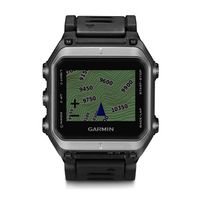
The Garmin Epix was released as the top of Garmin's GPS watch line, though it's been superseded by the Garmin Fenix 5X. The Epix has nearly all of the functionality of the Fenix 5X, but now costs far less. It's full color map display is great for both urban and wilderness runners when they're in unfamiliar surroundings. The Epix includes Connect IQ that allows it run applications, much like a smartphone, but Garmin's support of Epix is rather poor and the Epix doesn't have the latest version of Connect IQ. This means you can't use the Stryd app, or a number of others that require the latest version. You can still get the extremely accurate pace & distance of Stryd while recording a GPS track, but you can't get running power so easily. The Epix has a clear display, real buttons, touchscreen, map display and rich functionality, which makes it one of the best watches if you combine it with a Stryd footpod, and you can afford it. The big concern I have is that Garmin seems to be forgetting about the Epix, with fewer firmware updates than other devices, though they did issue one in Feb 2017. On the other hand, the price of the Epix has dropped dramatically, making it a rather more attractive option. For a simple evaluation of a GPS watch, I look at how well it can answer some basic questions:
- How far did I run? This is the most basic question, and sadly, the Epix has rather poor GPS Accuracy, and while firmware updates might improve this slightly, I doubt it will get close to the accuracy of the Polar V800. It looks like activating WAAS might improve accuracy, it's still not great. The good news is that the Epix has good support for the Stryd footpod which allows you to get extremely accurate pace and distance while retaining all GPS navigation features.
- How fast am I running? Knowing how fast you're running can be a nice to know, or it can be vital for your training or race performance. Because of the nature of GPS, watches that rely on GPS signal alone tend to have serious problems with current pace. Thankfully, the Epix will support the Stryd footpod.
- Where am I? The Epix is as good as it gets for navigation. It includes:
- Color Maps. You'll see full color maps, rather like a smart phone, with roads and paths marked out.
- Track Outline. There is a display of where you've run, rather like a breadcrumb trail. This outline is superimposed over the color maps, and you can use it to backtrack along your path.
- Course Outline. This is an outline of a route that can be downloaded. I've found this useful during ultras or in unfamiliar cities where I've needed to know where to go.
- Back To Start. This is a simple arrow point to your starting point, so it won't help you backtrack.
- Back To Waypoint. You can mark a location and use the arrow to point to it later. Again, this is a simple "as the crow flies" pointer.
- Compass. A magnetic compass can help you orient yourself or the map. Without a magnetic compass you have to be moving for the GPS to give you a sense of direction.
- What's my cadence? Cadence is one of the most critical and often overlooked aspects of running. If you get your Cadence right, many other things naturally fall into place. Not only does the Epix get Cadence from a Footpod, it will also get it from the Garmin Run Heart Rate monitor. There is also support for Cadence from the internal accelerometer, though I find that's not as accurate. The Cadence alerts are especially useful for keeping you on track.
For ultramarathon running the battery life of the Epix makes it a strong candidate, especially with the mapping functionality. If you hope to be still moving during the Second Dawn, you can charge it while running as detailed below.

| This review was made possible by readers like you buying products via my links. I buy all the products I review through normal retail channels, which allows me to create unbiased reviews free from the influence of reciprocity, or the need to keep vendors happy. It also ensures I don't get "reviewer specials" that are better than the retail versions.
|
Contents
1 GPS Accuracy
The GPS Accuracy for the Epix is poor at best; while it's not the worst I've seen, it's close to the bottom of the pile. Determining if it's acceptable for your running will depend on your usage.
- The Epix can give a reasonable estimate of how far you've run but the errors can add up. The amount of error depends on your route; in straight lines the Epix is okay, though even then it's worse than most other devices. However, on a twisty course it is out by around 0.75 mile on a 20 mile run. That's enough to mess up your marathon training! I'd highly recommend you use the Epix with the Stryd footpod.
- GPS watches are not accurate enough to give you a useful display of your current pace. However, the Epix has great support for the Stryd footpod, something I'd highly recommend.
If you want better GPS Accuracy than the Epix, then the Polar V800 is by far the best I've tested, though the Suunto Ambit3 is close and a better all-round running watch. For more details on GPS accuracy, see the section "GPS Accuracy Analysis" below.
2 Garmin Epix Pros
- The Epix will display full color maps, which can be freely and easily downloaded from the internet.
- The Epix has great support for the Stryd footpod. It will display pace and distance from the extremely accurate Stryd while retaining all GPS navigation features. For situations where pacing is critical, such as running a marathon, this is a must have feature.
- The Epix supports Garmin's Connect IQ, which allows for the creation of apps in much the same way you can run apps on Android or iOS.
- The Epix is larger than devices like the Garmin 620, and it doesn't look like a traditional watch in the way the Garmin Fenix 2 does. However, I have tiny wrists (less than 6 inches) and I found Epix is quite comfortable, with a strap that works better than most I've tested. The Epix fits my wrist far better than the Polar V800 which I have to wear over a sweatband.
- The color display on the Epix has much richer colors than some of Garmin's earlier watches. In other sports watches I don't think that color adds much functionality, but it's vital for the Epix to be able to display maps. The font sizes are mostly easy to read, though occasionally I've struggled. The Epix has exactly the same size and resolution display as the Garmin 920XT.
- Like the Garmin 620, Garmin Fenix 3, and the Garmin 920XT, the Epix supports Running Dynamics which can show and record Cadence, Vertical Oscillation (VO) and Ground Contact Time (GCT). However, Garmin has not added the latest Running Dynamics metrics.
- The Epix can be configured to alert you when a metric is out of range. The alert for Cadence is particularly useful. The Cadence alert will work when it's using the internal accelerometer for Cadence, as well as the HRM-Run strap or a Footpod.
- There is a metronome to help you keep your Cadence where it should be, which is a really nice feature. The metronome can be set to make a sound and/or vibrate. The vibration option is nice so you don't annoy people you're running with. You can set the alert to go off every second, fourth, or sixth beat.
- Like many recent Garmin running watches, the Epix can display the Firstbeat Training Effect, an indicator of how hard a training session is. While I find this useful, it's important to remember that the Training Effect is strongly biased towards intensity rather than duration. (Training Effect requires a heart rate monitor.)
- There is also support for the Firstbeat Estimate of Recovery Time before the next workout, which I also like, though you have to take this with a large pinch of salt.
- The Epix will cache the GPS satellite locations for the next few days to reduce startup time. This is particularly useful when travelling to a new location as older devices can take minutes to get a fix when travelling. I hate standing around on a street corner in the cold, dark, early hours of the morning waiting for my watch to tell me I can start running. In my testing the satellite acquisition was generally very rapid, and the Epix is sensitive enough to get a fix inside my house. However, I have had issues with the Epix acquiring a signal near tall buildings, more so than other devices I've tested.
- There are five real buttons as well as a touchscreen on the Epix, which is a great combination. The touchscreen allows you to press and hold on a displayed value to change it while you're running, something I've really liked. I've had no issues with the Epix in the rain, but I've had several reports from runners who've had problems.
- The prediction of your V̇O2max worked well for me, but I would not rely on its accuracy.
- The Epix will upload your workouts to Garmin Connect via USB, or via a smart phone and Bluetooth. The smart phone can upload a workout as it takes place, which is nice for folks tracking you during a race, though it means wearing the watch and the phone together. If you plug the Epix into a computer it will function as a flash drive, giving you direct access to your workouts as '.FIT' files. The FIT files provide compatibility with a huge range of software. One of the few things that are in the Garmin 920XT and not in the Epix is the ability to upload workouts over WiFi, which was nice.
- The Epix will not display Heart Rate Variability but it is possible for it to record Heart Rate Variability for later analysis. To enable this recording, you need to download a special FIT file from the firstbeat.com web site. (There is a Connect IQ app that will calculate HRV, but you can't use it during a workout, something I hope will be corrected in the future.)
- The 24 hour battery life is good enough for many ultramarathons, and the extended mode allows for 50 hours with degraded GPS accuracy. In my informal testing, I found that displaying the map reduced battery life.
- There are various navigation capabilities in the Epix. You can save your current location and return to it later, or take a sighting on a distant object and the Epix will point you in the right direction. TracBack will reverse the course you've run to get you back to your start.
- You can use the Epix as an activity monitor, something that's common to many new sports watches. However, because the Epix is only using its internal accelerometer the activity estimates are rather poor. If you need an activity monitor, I'd recommend the Basis Activity Tracker which has sensors for heart rate, skin temperature and perspiration.
- The Epix will record your personal best performances, such as fasted 5K or longest distance. These are a nice novelty, but for most people you won't be setting PR's on a regular enough basis for it to add much value.
- While the Epix does not have much in the way of graphs out of the box, Connect IQ is being used to add graphs for things like heart rate.
- Because the Epix has room for extra maps, it actually has a good amount of storage space. It's unlikely most runners will ever run out of room for workouts unless they've filled the Epix with maps.
- A minor win for the Epix is it's charging cable; it's the only device where I've found the cable clips into the watch easily and reliably.
3 Garmin Epix Cons
The Epix has no major flaws, and these cones are really more quibbles than anything else.
- The Epix is not unattractive in a rather plastic way, but it's nowhere near as elegant and stylish as the Polar V800. In a strange way, I think the looks of the epics have proved to be one of its bigger problems. While I think it's better looking than the Garmin 920XT, I think it's trying to look more stylish and less functional, which gives it an air of "tried but failed" in the stylistic department. Garmin might have done better to package it so that it looks like it's intended to be plastic, rather than aiming to mimic the looks of the Fenix range.
- The Epix includes an internal accelerometer to give you an idea of pace and distance while running on a treadmill without a footpod, but I found the accuracy was rather poor. I have yet to come across a watch that can reasonably estimate your pace from the movement of your wrist, nor does it seem likely that this functionality is practical.
- You need to have the new HRM for the some of the features. The Epix will display Heart Rate and calculate Training Effect with the older Garmin HRM, but not Ground Contact Time or Vertical Oscillation.
4 Comparisons
Here are some of the watches that our competitors for the Epix:
- Garmin 920XT. The Epix has nearly all the features of the 920XT plus the extra mapping and navigation features. I think the Epix is well worth the extra $100 over the 920XT though you have to accept slightly worse GPS accuracy.
- Fenix 3. The Garmin Fenix 3 falls half way between the 920XT and the Epix. It has all the features of the 920XT (including WiFi upload), plus some navigation features that might be useful to some folks. However, the main benefit of the Fenix 3 over the 920XT or Epix is probably that it looks a little more like a watch than a brick. I don't think that the Fenix 3 is worth the premium over the 920XT or the saving over the Epix.
- Garmin 620. The 620 has a subset of the features of the Epix and is closer to the 920XT without the Connect IQ. The 620 is a lot smaller, so I'd only go for the 620 over the Epix if size is critical.
- Garmin 610. The 610 is the predecessor to the Garmin 620 and its price has dropped to make it an attractive option. While the 610 lacks many of the cool new features of the 620/920XT/Epix, it performs the core functionality you need is a runner as well as (or better than) the newer devices. When I'm pacing marathons, I still make use of the 610 with a Footpod to keep me on pace. I would highly recommend giving the Garmin 610 serious consideration, even though it's an older device.
- Garmin 310XT. Like the 610, the 310XT is older and its price has dropped nicely. You could think of the 310XT as a larger 610 with better battery life.
- Polar V800. The V800 is a far more elegant watch than the Epix, and is beautifully made. The V800 also has outstanding GPS accuracy, which makes it a strong contender for your money. However the V800 is quite expensive, and its functionality is a little limited. (Don't expect the good GPS accuracy to give an accurate display of current pace – you need a Garmin 310XT/910XT/610 with a footpod for that.)
5 What's Missing
While I don't consider these missing features as 'cons', it's worth understanding the features that are missing compared with other watches. You'll notice that the Epix has a rather short list of missing features.
- Web Configuration. Some watches allow you to setup the configuration via a web site, and then download your changes. This is vastly easier than fiddling with the watch.
6 Stryd Support
Main article: Stryd
While the Epix has poor GPS accuracy, even the best GPS watch is still not good enough for accurate pacing. The answer currently lies with Stryd and extremely accurate Footpod that can measure distance and pace far better than GPS. The Epix has the best level of Stryd support, and will allow you to have all the accuracy of Stryd for pace and distance while having GPS active. This allows you to maintain all of the navigation features of the Epix, including the full color maps, which is probably why you want an Epix anyway. You can even get an estimate of your Running Power from Stryd, but only if you set Stryd to send the power information as if it were the Cadence field. This feature might get removed, so if Power is important to you, then be cautious about getting an Epix. It's possible Garmin will update the Epix to the latest version of Connect IQ which will allow you to run the Stryd app. I'd strongly recommend getting a Stryd Footpod to go with your Epix. If that's too expensive, I'd argue that you're much better off getting the Stryd and saving money by getting a cheaper watch like the Garmin Vivoactive. To get pace and distance from Stryd while recording the GPS data, pair as a normal footpod. Settings -> sensors -> add new -> footpod. Under the sensor, set speed=always, distance=always, calibration -> auto calibrate disabled.
7 Charge On The Run for Ultramarathons
Main article: Charge On The Run
The Epix's standard battery life is not enough for longer ultramarathons; most runners in a 100-mile race will need a little longer at least. One option is to reduce the GPS polling interval, which bumps the battery life up to 50-hours, but you could also consider charging the Epix during your run. The Epix has about a 500 mAh (milliamp-hour) battery based on my measurements, so it doesn't take much to recharge it. In fact, the problem is generally finding a battery pack that's small enough, as batteries tend to be heavy. My two preferred options are below, the Anker and the PulsePak.
The Anker is much bigger (3.75"/9.5cm) and heavier (2.9oz/82g), though it's shape makes it easy to carry in your hand and it will slip into the pockets of Race Ready shorts. It holds 3,350 mAh, which is way more than you need, recharging the Epix more than six times over. It's reasonably priced at Error: Could not parse data from Amazon!. The PulsePak is far smaller (2"/5cm), lighter (0.5oz/15g), and cheaper at Error: Could not parse data from Amazon!. It only holds 500 mAh, but that's enough for a full charge, and it's small enough to carry a couple. The obvious approach is to use the charging dock and cable that came with the Epix, holding a battery pack in your hand, which is shown below. I'm not a fan of this approach as the battery occupies your hand and the cable is rather long. You can tuck the battery in a pocket, but then the cable really annoys me. (Putting the watch and battery in a pack or pocket seems to defeat the object of having a watch if you can't see it.) The Garmin Epix has its charging port on the side, and the cable just clips in. You can see the standard cable below, along with an aftermarket adapter. (The yellow cable tie is just a marker so that I can find where the watch is plugged in when I've got lots of them on charge at the same time.)
As with most other watches, you can wrap the long cable around your arm and hold the battery in your hand, though this is a little cumbersome.
Here is a side view showing how standard connector clips on.
You can buy a cheap aftermarket charging adapter that has a micro-USB port Error: Could not parse data from Amazon!.
Rather annoyingly, the micro-USB port is on the underside of the adapter; life would've been a lot easier had it been on the top.
I found the best option was a short (1'/30cm) right angle micro-USB cable that allowed me to tuck the smaller battery pack into the wrist strap (Error: Could not parse data from Amazon!). This is a less-than-perfect, but it works.
As you can see from this side view, even with the right-angle USB cable the plug tends to press on my wrist. The sweat band is needed to create enough of a gap for the plug.
8 Downloading Maps
This is the easiest way to download maps I've found so far.
- Go to [1] on a browser
- I select "Routable Bicycle" which seems to work well.
- Choose the location; in the US, select the state you want under "North America" drop down.
- You can select the locations you want in the menu on the left of the screen.
- Alternatively you can select specific areas visually by clicking on "Enable manual tile selection", and selecting the tiles. You have to give them your email address and they'll mail you a link when the file has been built.
- Download the file.
- If the download is a zip file, you'll need to unzip it.
- Plug in the Epix to your computer.
- Put the IMG file into the GARMIN subfolder of the Epix.
- The map should be enabled automatically, but you can toggle them on and off in the Epix menus.
9 Visual Comparison
10 GPS Accuracy Analysis
The Garmin Epix has rather poor GPS Accuracy, which is a shame in an otherwise excellent device.
- Under the bridge the Epix errors even out so the Trueness is quite good, but the precision is poor.
- On the out-and-back turnaround the Epix is poor, but no worse than you'd expect from its overall rating.
- Running in a straight line is a fairly easy task for most GPS watches, but while the Epix does better here than elsewhere, it actually has the worst trueness in a straight line of any watch.
- I not had any issues with the Epix maintaining the GPS signal, though I have had occasional times when it's struggled to acquire an initial signal (Time To First Fix).
11 Comparison Table
I evaluate running watches in three distinct ways. Firstly, you can use a watch on its own, without any kind of Footpod. This is probably the most common way runners use their watch, but you miss out on a lot. The second rating is with a standard Footpod that is available quite cheaply. These Footpod's can be reasonably accurate once the calibrated, but calibration is a little tedious. The final evaluation is with the Stryd Footpod, which is vastly more accurate than any other type of Footpod, or and more accurate than GPS. The table below looks at the score, and the value for money of each watch for each of the three conditions. (I’ve also tested the Apple Watch 3, but I’ve not included it in these tables as it’s not really a running watch.)
| Review | With Stryd Score | With Stryd Value for money | With Footpod Score | With Footpod Value for money | Without Footpod Score | Without Footpod Value for money | Price at Amazon.com |
|---|---|---|---|---|---|---|---|
| Garmin Epix Review | 47 | 4.5 | 31 | 3.9 | 23 | 3.4 | Error: Could not parse data from Amazon! |
| Garmin Fenix 5X Review | 47 | 2.9 | 32 | 2.3 | 24 | 1.9 | Error: Could not parse data from Amazon! |
| Garmin Fenix 3 Review | 45 | 3.8 | 28 | 3.1 | 24 | 3 | Error: Could not parse data from Amazon! |
| Garmin 935 Review | 45 | 3.6 | 30 | 3 | 22 | 2.4 | Error: Could not parse data from Amazon! |
| Garmin Vivoactive HR Review | 40 | 4.9 | 21 | 3.8 | 17 | 3.8 | Error: Could not parse data from Amazon! |
| Garmin 920XT Review | 39 | 4.4 | 30 | 4.7 | 24 | 4.5 | Error: Could not parse data from Amazon! |
| Suunto Spartan Ultra Review | 37 | 2.6 | 27 | 2.3 | 23 | 2.1 | Error: Could not parse data from Amazon! |
| Garmin Vivoactive 3 Review | 36 | 4 | 19 | 2.9 | 15 | 2.8 | Error: Could not parse data from Amazon! |
| Garmin Vivoactive Review | 34 | 5.1 | 14 | 3.4 | 10 | 3.3 | Error: Could not parse data from Amazon! |
| Suunto Spartan Trainer Review | 34 | 3.9 | 23 | 3.7 | 18 | 3.4 | Error: Could not parse data from Amazon! |
| Polar V800 Review | 33 | 2.8 | 26 | 2.8 | 22 | 2.7 | Error: Could not parse data from Amazon! |
| Suunto Ambit2 Review | 32 | 3.9 | 25 | 4.3 | 21 | 4.5 | Error: Could not parse data from Amazon! |
| Suunto Ambit3 Peak Review | 32 | 3.4 | 29 | 4.1 | 25 | 4.2 | Error: Could not parse data from Amazon! |
| Garmin Fenix 2 Review | 31 | 2.9 | 22 | 2.7 | 18 | 2.5 | Error: Could not parse data from Amazon! |
| Suunto Ambit3 Run Review | 30 | 4 | 27 | 5.5 | 23 | 5.9 | Error: Could not parse data from Amazon! |
| Suunto Ambit2 R Review | 30 | 3.5 | 23 | 3.8 | 19 | 3.8 | Error: Could not parse data from Amazon! |
| Garmin 235 Review | 28 | 2.9 | 20 | 2.8 | 12 | 2 | Error: Could not parse data from Amazon! |
| Garmin 620 Review | 27 | 3.8 | 24 | 5.1 | 20 | 5.6 | Error: Could not parse data from Amazon! |
| Garmin 910XT Review | 26 | 3.9 | 26 | 6.1 | 21 | 6.7 | Error: Could not parse data from Amazon! |
| Garmin 310XT Review | 25 | 4.6 | 24 | 8.3 | 18 | 10 | Error: Could not parse data from Amazon! |
| Polar M400 Review | 25 | 4.3 | 15 | 4.5 | 11 | 4.9 | Error: Could not parse data from Amazon! |
| Garmin 225 Review | 25 | 3.8 | 13 | 3.1 | 9 | 2.9 | Error: Could not parse data from Amazon! |
| TomTom Cardio Runner Review | 25 | 3.3 | 10 | 2 | 10 | 2.5 | Error: Could not parse data from Amazon! |
| Polar M430 Review | 25 | 3.2 | 15 | 2.9 | 11 | 2.7 | Error: Could not parse data from Amazon! |
| Garmin 610 Review | 24 | 3.3 | 20 | 4.3 | 14 | 3.9 | Error: Could not parse data from Amazon! |
| Leikr Review | 10 | 1 | 20 | 2.5 | 14 | 2 | Leikr ($380) |
| Epson SF-510 Review | 4 | 0.7 | 6 | 2 | 6 | 3 | Error: Could not parse data from Amazon! |
| Epson SF-810 Review | 4 | 0.6 | 6 | 1.6 | 6 | 2.3 | Error: Could not parse data from Amazon! |
| Garmin 10 Review | 2 | 0.3 | 2 | 0.6 | 2 | 0.9 | Error: Could not parse data from Amazon! |
The score is the sum of how well each watch can answer the four basic questions (how far, how fast, where are you, what's your cadence), plus some bonus points.
- The "How far you've run" will be based on GPS only for "without Footpod" and "with Standard Footpod", but based on Stryd if supported in the "with Stryd Footpod" table..
- How fast you're running assumes you're using a Footpod if it's supported, otherwise the rating is 0-2 based on GPS accuracy.
- The "Where are you?" is based on various navigation features such as back to start, breadcrumbs, and preloaded maps. For some watches, you have to turn GPS off to get the benefit of Stryd, so those watches have worse "where are you scores" with Stryd than without.
- The cadence score uses 1 point for an internal cadence sensor, 2 points for footpod support, 1 point for support from chest strap cadence, and 1 point for cadence alerts.
- I give 1-2 bonus points for application support, 1-2 bonus points for data upload, 1-2 bonus points for Optical Heart Rate Monitoring, and 0-1 bonus points for battery life.
- Value for money is the score divided by the price (at the time I last updated the table.) Your needs may be different, so you might weight the different aspects of the watches differently, or be basing your decision on different criteria totally. Hopefully this table will give you a good starting point for your decision.
11.1 Score Breakdown without a Footpod
| Review | Score | Value for money6 | How far did you run?1 |
How fast are you running?2 |
Where are you?3 |
What's your cadence?4 |
Bonus Points5 | class="unsortable" |
Price at Amazon.com |
|---|---|---|---|---|---|---|---|---|
| Suunto Ambit3 Peak Review | 25 | 4.2 | 8 | 3 | 6 | 2 | 6 | Error: Could not parse data from Amazon! |
| Garmin 920XT Review | 24 | 4.5 | 1 | 2 | 7 | 6 | 8 | Error: Could not parse data from Amazon! |
| Garmin Fenix 3 Review | 24 | 3 | 2 | 1 | 7 | 6 | 8 | Error: Could not parse data from Amazon! |
| Garmin Fenix 5X Review | 24 | 1.9 | 1 | 0 | 9 | 6 | 8 | Error: Could not parse data from Amazon! |
| Suunto Ambit3 Run Review | 23 | 5.9 | 8 | 3 | 5 | 2 | 5 | Error: Could not parse data from Amazon! |
| Garmin Epix Review | 23 | 3.4 | 0 | 0 | 9 | 6 | 8 | Error: Could not parse data from Amazon! |
| Suunto Spartan Ultra Review | 23 | 2.1 | 8 | 2 | 6 | 2 | 5 | Error: Could not parse data from Amazon! |
| Polar V800 Review | 22 | 2.7 | 9 | 4 | 3 | 2 | 4 | Error: Could not parse data from Amazon! |
| Garmin 935 Review | 22 | 2.4 | 1 | 0 | 7 | 6 | 8 | Error: Could not parse data from Amazon! |
| Garmin 910XT Review | 21 | 6.7 | 5 | 3 | 6 | 2 | 5 | Error: Could not parse data from Amazon! |
| Suunto Ambit2 Review | 21 | 4.5 | 4 | 3 | 6 | 2 | 6 | Error: Could not parse data from Amazon! |
| Garmin 620 Review | 20 | 5.6 | 3 | 2 | 2 | 6 | 7 | Error: Could not parse data from Amazon! |
| Suunto Ambit2 R Review | 19 | 3.8 | 4 | 3 | 5 | 2 | 5 | Error: Could not parse data from Amazon! |
| Garmin 310XT Review | 18 | 10 | 7 | 2 | 4 | 0 | 5 | Error: Could not parse data from Amazon! |
| Suunto Spartan Trainer Review | 18 | 3.4 | 5 | 3 | 4 | 2 | 4 | Error: Could not parse data from Amazon! |
| Garmin Fenix 2 Review | 18 | 2.5 | 1 | 0 | 6 | 6 | 5 | Error: Could not parse data from Amazon! |
| Garmin Vivoactive HR Review | 17 | 3.8 | 0 | 0 | 2 | 6 | 9 | Error: Could not parse data from Amazon! |
| Garmin Vivoactive 3 Review | 15 | 2.8 | 0 | 0 | 4 | 4 | 7 | Error: Could not parse data from Amazon! |
| Garmin 610 Review | 14 | 3.9 | 3 | 2 | 3 | 2 | 4 | Error: Could not parse data from Amazon! |
| Leikr Review | 14 | 2 | 5 | 2 | 4 | 0 | 3 | Leikr ($380) |
| Garmin 235 Review | 12 | 2 | 0 | 0 | 2 | 2 | 8 | Error: Could not parse data from Amazon! |
| Polar M400 Review | 11 | 4.9 | 3 | 1 | 1 | 2 | 4 | Error: Could not parse data from Amazon! |
| Polar M430 Review | 11 | 2.7 | 3 | 1 | 1 | 2 | 4 | Error: Could not parse data from Amazon! |
| Garmin Vivoactive Review | 10 | 3.3 | 0 | 0 | 0 | 6 | 4 | Error: Could not parse data from Amazon! |
| TomTom Cardio Runner Review | 10 | 2.5 | 2 | 1 | 0 | 2 | 5 | Error: Could not parse data from Amazon! |
| Garmin 225 Review | 9 | 2.9 | 1 | 1 | 0 | 2 | 5 | Error: Could not parse data from Amazon! |
| Epson SF-510 Review | 6 | 3 | 0 | 0 | 0 | 2 | 4 | Error: Could not parse data from Amazon! |
| Epson SF-810 Review | 6 | 2.3 | 1 | 0 | 0 | 2 | 3 | Error: Could not parse data from Amazon! |
| Garmin 10 Review | 2 | 0.9 | 0 | 0 | 0 | 0 | 2 | Error: Could not parse data from Amazon! |
11.2 Score Breakdown with a Standard Footpod
| Review | Score | Value for money6 | How far did you run?1 |
How fast are you running?2 |
Where are you?3 |
What's your cadence?4 |
Bonus Points5 | class="unsortable" |
Price at Amazon.com |
|---|---|---|---|---|---|---|---|---|
| Garmin Fenix 5X Review | 32 | 2.3 | 1 | 4 | 9 | 10 | 8 | Error: Could not parse data from Amazon! |
| Garmin Epix Review | 31 | 3.9 | 0 | 4 | 9 | 10 | 8 | Error: Could not parse data from Amazon! |
| Garmin 920XT Review | 30 | 4.7 | 1 | 4 | 7 | 10 | 8 | Error: Could not parse data from Amazon! |
| Garmin 935 Review | 30 | 3 | 1 | 4 | 7 | 10 | 8 | Error: Could not parse data from Amazon! |
| Suunto Ambit3 Peak Review | 29 | 4.1 | 8 | 3 | 6 | 6 | 6 | Error: Could not parse data from Amazon! |
| Garmin Fenix 3 Review | 28 | 3.1 | 2 | 1 | 7 | 10 | 8 | Error: Could not parse data from Amazon! |
| Suunto Ambit3 Run Review | 27 | 5.5 | 8 | 3 | 5 | 6 | 5 | Error: Could not parse data from Amazon! |
| Suunto Spartan Ultra Review | 27 | 2.3 | 8 | 2 | 6 | 6 | 5 | Error: Could not parse data from Amazon! |
| Garmin 910XT Review | 26 | 6.1 | 5 | 4 | 6 | 6 | 5 | Error: Could not parse data from Amazon! |
| Polar V800 Review | 26 | 2.8 | 9 | 4 | 3 | 6 | 4 | Error: Could not parse data from Amazon! |
| Suunto Ambit2 Review | 25 | 4.3 | 4 | 3 | 6 | 6 | 6 | Error: Could not parse data from Amazon! |
| Garmin 310XT Review | 24 | 8.3 | 7 | 4 | 4 | 4 | 5 | Error: Could not parse data from Amazon! |
| Garmin 620 Review | 24 | 5.1 | 3 | 2 | 2 | 10 | 7 | Error: Could not parse data from Amazon! |
| Suunto Ambit2 R Review | 23 | 3.8 | 4 | 3 | 5 | 6 | 5 | Error: Could not parse data from Amazon! |
| Suunto Spartan Trainer Review | 23 | 3.7 | 5 | 4 | 4 | 6 | 4 | Error: Could not parse data from Amazon! |
| Garmin Fenix 2 Review | 22 | 2.7 | 1 | 0 | 6 | 10 | 5 | Error: Could not parse data from Amazon! |
| Garmin Vivoactive HR Review | 21 | 3.8 | 0 | 0 | 2 | 10 | 9 | Error: Could not parse data from Amazon! |
| Garmin 610 Review | 20 | 4.3 | 3 | 4 | 3 | 6 | 4 | Error: Could not parse data from Amazon! |
| Garmin 235 Review | 20 | 2.8 | 0 | 4 | 2 | 6 | 8 | Error: Could not parse data from Amazon! |
| Leikr Review | 20 | 2.5 | 5 | 4 | 4 | 4 | 3 | Leikr ($380) |
| Garmin Vivoactive 3 Review | 19 | 2.9 | 0 | 0 | 4 | 8 | 7 | Error: Could not parse data from Amazon! |
| Polar M400 Review | 15 | 4.5 | 3 | 1 | 1 | 6 | 4 | Error: Could not parse data from Amazon! |
| Polar M430 Review | 15 | 2.9 | 3 | 1 | 1 | 6 | 4 | Error: Could not parse data from Amazon! |
| Garmin Vivoactive Review | 14 | 3.4 | 0 | 0 | 0 | 10 | 4 | Error: Could not parse data from Amazon! |
| Garmin 225 Review | 13 | 3.1 | 1 | 1 | 0 | 6 | 5 | Error: Could not parse data from Amazon! |
| TomTom Cardio Runner Review | 10 | 2 | 2 | 1 | 0 | 2 | 5 | Error: Could not parse data from Amazon! |
| Epson SF-510 Review | 6 | 2 | 0 | 0 | 0 | 2 | 4 | Error: Could not parse data from Amazon! |
| Epson SF-810 Review | 6 | 1.6 | 1 | 0 | 0 | 2 | 3 | Error: Could not parse data from Amazon! |
| Garmin 10 Review | 2 | 0.6 | 0 | 0 | 0 | 0 | 2 | Error: Could not parse data from Amazon! |
11.3 Score Breakdown with a Stryd Footpod
| Review | Score | Value for money6 | How far did you run?1 |
How fast are you running?2 |
Where are you?3 |
What's your cadence?4 |
Bonus Points5 | class="unsortable" |
Price at Amazon.com |
|---|---|---|---|---|---|---|---|---|
| Garmin Epix Review | 47 | 4.5 | 10 | 10 | 9 | 10 | 8 | Error: Could not parse data from Amazon! |
| Garmin Fenix 5X Review | 47 | 2.9 | 10 | 10 | 9 | 10 | 8 | Error: Could not parse data from Amazon! |
| Garmin Fenix 3 Review | 45 | 3.8 | 10 | 10 | 7 | 10 | 8 | Error: Could not parse data from Amazon! |
| Garmin 935 Review | 45 | 3.6 | 10 | 10 | 7 | 10 | 8 | Error: Could not parse data from Amazon! |
| Garmin Vivoactive HR Review | 40 | 4.9 | 10 | 10 | 1 | 10 | 9 | Error: Could not parse data from Amazon! |
| Garmin 920XT Review | 39 | 4.4 | 10 | 10 | 1 | 10 | 8 | Error: Could not parse data from Amazon! |
| Suunto Spartan Ultra Review | 37 | 2.6 | 10 | 10 | 6 | 6 | 5 | Error: Could not parse data from Amazon! |
| Garmin Vivoactive 3 Review | 36 | 4 | 10 | 10 | 1 | 8 | 7 | Error: Could not parse data from Amazon! |
| Garmin Vivoactive Review | 34 | 5.1 | 10 | 10 | 0 | 10 | 4 | Error: Could not parse data from Amazon! |
| Suunto Spartan Trainer Review | 34 | 3.9 | 10 | 10 | 4 | 6 | 4 | Error: Could not parse data from Amazon! |
| Polar V800 Review | 33 | 2.8 | 10 | 10 | 3 | 6 | 4 | Error: Could not parse data from Amazon! |
| Suunto Ambit2 Review | 32 | 3.9 | 10 | 10 | 6 | 0 | 6 | Error: Could not parse data from Amazon! |
| Suunto Ambit3 Peak Review | 32 | 3.4 | 10 | 10 | 6 | 0 | 6 | Error: Could not parse data from Amazon! |
| Garmin Fenix 2 Review | 31 | 2.9 | 10 | 10 | 6 | 0 | 5 | Error: Could not parse data from Amazon! |
| Suunto Ambit3 Run Review | 30 | 4 | 10 | 10 | 5 | 0 | 5 | Error: Could not parse data from Amazon! |
| Suunto Ambit2 R Review | 30 | 3.5 | 10 | 10 | 5 | 0 | 5 | Error: Could not parse data from Amazon! |
| Garmin 235 Review | 28 | 2.9 | 10 | 10 | 0 | 0 | 8 | Error: Could not parse data from Amazon! |
| Garmin 620 Review | 27 | 3.8 | 10 | 10 | 0 | 0 | 7 | Error: Could not parse data from Amazon! |
| Garmin 910XT Review | 26 | 3.9 | 10 | 10 | 1 | 0 | 5 | Error: Could not parse data from Amazon! |
| Garmin 310XT Review | 25 | 4.6 | 10 | 10 | 0 | 0 | 5 | Error: Could not parse data from Amazon! |
| Polar M400 Review | 25 | 4.3 | 10 | 10 | 1 | 0 | 4 | Error: Could not parse data from Amazon! |
| Garmin 225 Review | 25 | 3.8 | 10 | 10 | 0 | 0 | 5 | Error: Could not parse data from Amazon! |
| TomTom Cardio Runner Review | 25 | 3.3 | 10 | 10 | 0 | 0 | 5 | Error: Could not parse data from Amazon! |
| Polar M430 Review | 25 | 3.2 | 10 | 10 | 1 | 0 | 4 | Error: Could not parse data from Amazon! |
| Garmin 610 Review | 24 | 3.3 | 10 | 10 | 0 | 0 | 4 | Error: Could not parse data from Amazon! |
| Leikr Review | 10 | 1 | 5 | 2 | 0 | 0 | 3 | Leikr ($380) |
| Epson SF-510 Review | 4 | 0.7 | 0 | 0 | 0 | 0 | 4 | Error: Could not parse data from Amazon! |
| Epson SF-810 Review | 4 | 0.6 | 1 | 0 | 0 | 0 | 3 | Error: Could not parse data from Amazon! |
| Garmin 10 Review | 2 | 0.3 | 0 | 0 | 0 | 0 | 2 | Error: Could not parse data from Amazon! |
11.4 Basic Features
|
Review |
Released | GPS Accuracy |
Weight (oz) | Size (CM3) | Display (mm) | Resolution (Pixels) | Waterproofing | Heart Rate Monitor |
Cadence | Data Upload |
|---|---|---|---|---|---|---|---|---|---|---|
| Garmin Epix Review | 2015 | 6.2 | 3.0 | 48 | 29 x 21 (609mm2) | 205 x 148 (30.3K total) | Good (50m) | Yes | Internal/Footpod/Heart Rate Monitor/Alert | Yes |
| Garmin Fenix 5X Review | 2017 | 5.6 | 3.5 | 36 | 30.5 (round) (731mm2) | 240 diameter (45.2K total) | Good (100m) | Yes | Internal/Footpod/Heart Rate Monitor/Alert | Yes |
| Garmin Fenix 3 Review | 2015 | 6.2 | 2.9 | 33 | 30 (round) (726mm2) | 218 diameter (37.3K total) | Good (100m) | Yes | Internal/Footpod/Heart Rate Monitor/Alert | Yes |
| Garmin 935 Review | 2017 | 5.6 | 1.7 | 24 | 30.5 (round) (731mm2) | 240 diameter (45.2K total) | Good (100m) | Yes | Internal/Footpod/Heart Rate Monitor/Alert | Yes |
| Garmin Vivoactive HR Review | 2016 | 4.9 | 1.7 | 19 | 21 x 29 (609mm2) | 148 x 205 (30.3K total) | Good (50m) | Yes (+OHRM) | Internal/Footpod/Heart Rate Monitor/Alert | Yes |
| Garmin 920XT Review | 2014 | 6.6 | 2.2 | 35 | 29 x 21 (609mm2) | 205 x 148 (30.3K total) | Good (50m) | Yes | Internal/Footpod/Heart Rate Monitor/Alert | Yes |
| Garmin Vivoactive 3 Review | 2017 | 1.5 | 17 | 30.5 (round) (731mm2) | 240 diameter (45.2K total) | Good (50m) | Yes (+OHRM) | Internal/Footpod | Yes | |
| Garmin Vivoactive Review | 2015 | 5.4 | 1.3 | 13 | 29 x 21 (592mm2) | 205 x 148 (30.3K total) | Good (50m) | Yes | Internal/Footpod/Heart Rate Monitor/Alert | Yes |
| Suunto Spartan Trainer Review | 2017 | 7.8 | 2.0 | 25 | 24 x 23 (529mm2) | 128 diameter (12.9K total) | Good (50m) | Yes (+OHRM) | Internal/Footpod | Yes |
| Suunto Ambit2 Review | 2013 | 7.6 | 3.1 | 30 | 29 (round) (661mm2) | 128 diameter (12.9K total) | Good (100m) | Yes | Internal/Footpod | Yes |
| Suunto Ambit3 Peak Review | 2014 | 7.9 | 2.9 | 30 | 29 (round) (661mm2) | 128 diameter (12.9K total) | Good (100m) | Yes | Internal/Footpod | Yes |
| Suunto Spartan Ultra Review | 2016 | 7.1 | 2.7 | 38 | 32 (round) (804mm2) | 320 diameter (80.4K total) | Good (100m) | Yes | Internal (Limited Footpod) | Yes |
| Garmin Fenix 2 Review | 2014 | 5.7 | 3.2 | 32 | 31 (round) (755mm2) | 70 diameter (3.8K total) | Good (50m) | Yes | Internal/Footpod/Heart Rate Monitor/Alert | Yes |
| Suunto Ambit3 Run Review | 2014 | 7.9 | 2.5 | 30 | 29 (round) (661mm2) | 128 x 128 (16.4K total) | Good (50m) | Yes | Internal/Footpod | Yes |
| Suunto Ambit2 R Review | 2013 | 7.6 | 2.5 | 30 | 29 (round) (661mm2) | 128 diameter (12.9K total) | Good (50m) | Yes | Internal/Footpod | Yes |
| Garmin 235 Review | 2015 | 4.9 | 1.5 | 19 | 31 (round) (755mm2) | 215 diameter (36.3K total) | Good (50m) | Yes (+OHRM) | Internal/Footpod | Yes |
| Garmin 620 Review | 2013 | 7.1 | 1.5 | 20 | 25.4 (round) (507mm2) | 180 diameter (25.4K total) | Good (50m) | Yes | Internal/Footpod/Heart Rate Monitor/Alert | Yes |
| Garmin 910XT Review | 2011 | 7.5 | 2.5 | 49 | 33 x 20 (660mm2) | 160 x 100 (16K total) | Good (50m) | Yes | Footpod/Alert | Yes |
| Garmin 310XT Review | 2009 | 7.5 | 2.5 | 63 | 33 x 20 (660mm2) | 160 x 100 (16K total) | Good (50m) | Yes | Footpod | Yes |
| Garmin 225 Review | 2015 | 6.2 | 1.5 | 24 | 25.4 (round) (507mm2) | 180 diameter (25.4K total) | Good (50m) | Yes (+OHRM) | Internal/Footpod | Yes |
| TomTom Cardio Runner Review | 2015 | 6.0 | 2.2 | 30 | 22 x 25 (550mm2) | 144 x 168 (24.2K total) | Good (50m) | Yes (+OHRM) | Internal/Footpod | Yes |
| Polar V800 Review | 2014 | 8.0 | 2.8 | 31 | 23 x 23 (529mm2) | 128 x 128 (16.4K total) | Good (30m) | Yes | Internal/Footpod | Yes |
| Polar M430 Review | 2017 | 7.2 | 2.0 | 24 | 23 x 23 (529mm2) | 128 x 128 (16.4K total) | Good (50m) | Yes (+OHRM) | Internal/Footpod | Yes |
| Polar M400 Review | 2014 | 6.6 | 2.0 | 24 | 23 x 23 (529mm2) | 128 x 128 (16.4K total) | Good (30m) | Yes | Internal/Footpod | Yes |
| Garmin 610 Review | 2011 | 7.3 | 2.5 | 41 | 25.4 (round) (507mm2) | 128 diameter (12.9K total) | Fair (IPX7) | Yes | Footpod/Alert | Yes |
| Leikr Review | 2013 | 7.3 | 2.4 | 25 | 41 x 31 (1271mm2) | 206 x 148 (76.8K total) | Fair (IPX6) | Yes | Footpod | Limited |
| Epson SF-510 Review | 2015 | 4.4 | 1.7 | 24 | 28 x 22 (616mm2) | 128 x 96 (12.3K total) | Good (50m) | Yes | Limited Internal | Limited |
| Epson SF-810 Review | 2015 | 5.5 | 1.8 | 28 | 28 (round) (616mm2) | 128 diameter (12.9K total) | Good (50m) | OHRM Only) | Limited Internal | Limited |
| Garmin 10 Review | 2012 | 3.8 | 1.3 | 33 | 25 x 24 (600mm2) | 55 x 32 (1.8K total) | Good (50m) | No | No | Yes |
|
Review |
Battery Life (hr) |
Tested Battery Life (hr) |
Extended Battery Life (hr) |
Charge On The Run? | Training Effect |
HRV | GPS cache | Sensors |
|---|---|---|---|---|---|---|---|---|
| Garmin Epix Review | 24 | 17.6 | 50 | Yes (with USB=Garmin) | Yes | Record | Yes | Ant+ |
| Garmin Fenix 5X Review | 20 | 23 | 35 | Yes, but can't be worn | Yes | Record | Yes | Bluetooth/Ant+ |
| Garmin Fenix 3 Review | 20 | 22 | 50 | Yes (with USB=Garmin) | Yes | No | Yes | Ant+ |
| Garmin 935 Review | 24 | 24.5 | 60 | Yes, but can't be worn | Yes | Record | Yes | Bluetooth/Ant+ |
| Garmin Vivoactive HR Review | 13 | 13 | Yes (with USB=Garmin) | No | No | Yes | Ant+ | |
| Garmin 920XT Review | 24 | 19 | 40 | No (terminates) | Yes | Record | Yes | Ant+ |
| Garmin Vivoactive 3 Review | 13 | 13 | No | Yes | Bluetooth/Ant+ | |||
| Garmin Vivoactive Review | 10 | 10 | 10 | Yes (with USB=Garmin) | No | No | Yes | Ant+ |
| Suunto Spartan Trainer Review | 10 | 11 | 30 | Yes | Yes | No | Yes | Bluetooth |
| Suunto Ambit2 Review | 15 | 50 | Yes | Yes | Record | Yes | Ant+ | |
| Suunto Ambit3 Peak Review | 20 | 100 | Yes | Yes | Record | Yes | Bluetooth | |
| Suunto Spartan Ultra Review | 18 | 17 | 26 | Yes, but can't be worn | Yes | Record | Yes | Bluetooth |
| Garmin Fenix 2 Review | 15 | 50 | Yes (with USB=Garmin) | Yes | No | Yes | Ant+ | |
| Suunto Ambit3 Run Review | 10 | 10.5 | 100 | Yes | Yes | Record | Yes | Bluetooth |
| Suunto Ambit2 R Review | 8 | 7.3 | 25 | Yes | Yes | Record | Yes | Ant+ |
| Garmin 235 Review | 11 | 11 | Yes, but no optical HR | Yes | No | Yes | Ant+ | |
| Garmin 620 Review | 10 | 10 | No (resets) | Yes | Record | Yes | Ant+ | |
| Garmin 910XT Review | 20 | 20 | Yes, but no display | Yes | Record | No | Ant+ | |
| Garmin 310XT Review | 20 | 20 | Yes, but no display | No | No | No | Ant+ | |
| Garmin 225 Review | 10 | 11 | 10 | No (resets) | No | No | Yes | Ant+ |
| TomTom Cardio Runner Review | 8 | 6.3 | 8 | No (resets) | No | No | Yes | Bluetooth HR |
| Polar V800 Review | 13 | 24 | 50 | No (terminates) | Yes | Display | Predictive | Bluetooth |
| Polar M430 Review | 8 | 8 | 8 | No | No | No | Yes | Bluetooth |
| Polar M400 Review | 8 | 8 | Yes, but can't be worn | No | No | No | Bluetooth | |
| Garmin 610 Review | 8 | 8 | Yes, but no display | Yes | Record | No | Ant+ | |
| Leikr Review | 5 | 6.5 | 5 | Yes, but can't be worn | No | No | Yes (few hours) | Ant+ |
| Epson SF-510 Review | 30 | 30 | 30 | No | No | No | Yes (few hours) | Bluetooth HR |
| Epson SF-810 Review | 20 | 26 | 20 | No | No | No | Yes (few hours) | None |
| Garmin 10 Review | 5 | 5 | No | No | No | No | None |
|
Review |
Color Maps | Breadcrumbs | Courses | To Waypoint | Compass | Reverse course | Beeline to start | Connect IQ | Altimeter |
|---|---|---|---|---|---|---|---|---|---|
| Garmin Epix Review | Yes | Yes | Yes | Yes | Yes | Yes | No | Yes | Yes |
| Garmin Fenix 5X Review | Yes | Yes | Yes | Yes | Yes | Yes | No | No | Yes |
| Garmin Fenix 3 Review | No | Yes | Yes | Yes | Yes | Yes | No | Yes | Yes |
| Garmin 935 Review | No | Yes | Yes | Yes | Yes | Yes | No | No | Yes |
| Garmin Vivoactive HR Review | No | No | No | No | No | No | No | Yes | Yes |
| Garmin 920XT Review | No | Yes | Yes | Yes | Yes | Yes | No | Yes | Yes |
| Garmin Vivoactive 3 Review | No | No | No | No | No | No | No | No | No |
| Garmin Vivoactive Review | No | No | No | No | No | No | Yes | Yes | No |
| Suunto Spartan Trainer Review | No | No | No | No | No | No | Yes | No | No |
| Suunto Ambit2 Review | No | No | Yes | Yes | Yes | Yes | Yes | No | Yes |
| Suunto Ambit3 Peak Review | No | No | Yes | Yes | Yes | Yes | Yes | No | Yes |
| Suunto Spartan Ultra Review | No | Yes | Yes | Yes | Yes | No | Yes | Yes | Yes |
| Garmin Fenix 2 Review | No | Yes | Yes | Yes | Yes | Yes | No | No | Yes |
| Suunto Ambit3 Run Review | No | No | Yes | Yes | Yes | Yes | Yes | No | No |
| Suunto Ambit2 R Review | No | No | Yes | Yes | Yes | Yes | Yes | No | No |
| Garmin 235 Review | No | No | No | No | No | No | Yes | Yes | No |
| Garmin 620 Review | No | No | No | No | No | No | No | No | No |
| Garmin 910XT Review | No | Yes | Yes | Yes | No | Yes | Yes | No | Yes |
| Garmin 310XT Review | No | Yes | Yes | Yes | No | Yes | No | No | No |
| Garmin 225 Review | No | No | No | No | No | No | No | No | No |
| TomTom Cardio Runner Review | No | No | No | No | No | No | No | No | No |
| Polar V800 Review | No | No | Yes | No | No | No | Yes | No | Yes |
| Polar M430 Review | No | No | No | No | No | No | Yes | No | No |
| Polar M400 Review | No | No | No | No | No | No | Yes | No | No |
| Garmin 610 Review | No | No | Yes | Yes | No | No | Yes | No | No |
| Leikr Review | Yes | Yes | Yes | No | No | No | No | No | No |
| Epson SF-510 Review | No | No | No | No | No | No | No | No | No |
| Epson SF-810 Review | No | No | No | No | No | No | No | No | No |
| Garmin 10 Review | No | No | No | No | No | No | No | No | No |
For "navigation":
- Color Maps gives you full color maps, rather like a smart phone, with roads and paths marked out.
- Track Outline is a display of where you've run, rather like a breadcrumb trail. If there are maps, the outline is superimposed otherwise this is just the outline on its own without any context.
- Course Outline is an outline of a route that can be downloaded. I've found this useful during ultras or in unfamiliar cities where I've needed to know where to go.
- Back To Start is a simple arrow point to your starting point, so it won't help you backtrack.
- Back To Waypoint returns you to a previously marked location using a simple arrow to point.
- Compass. A magnetic compass can help you orient yourself or the map. Without a magnetic compass you have to be moving for the GPS to give you a sense of direction.
(Older Reviews: Polar RC3 GPS, Soleus 1.0, Motorola Motoactv.)
